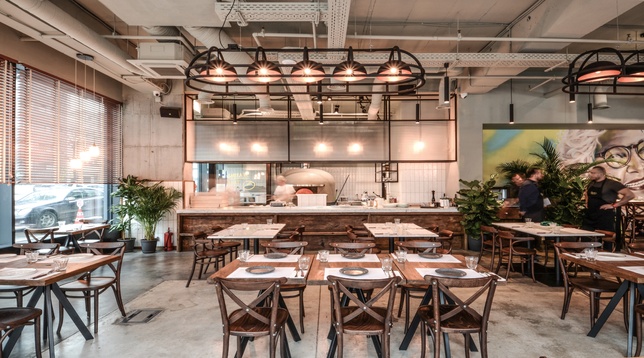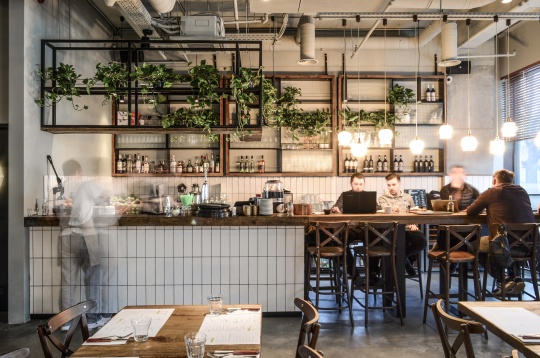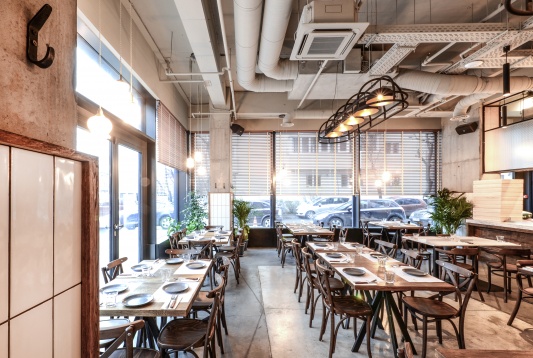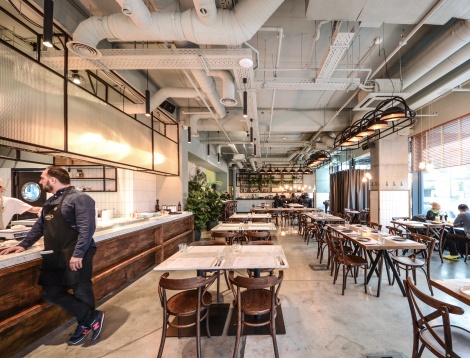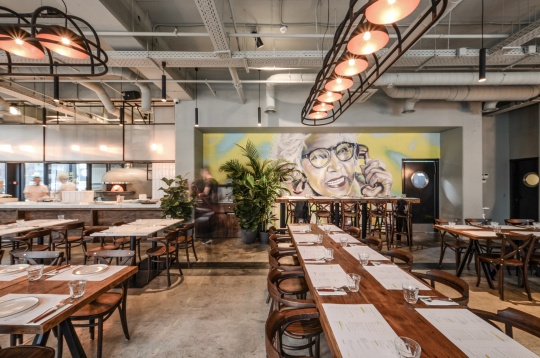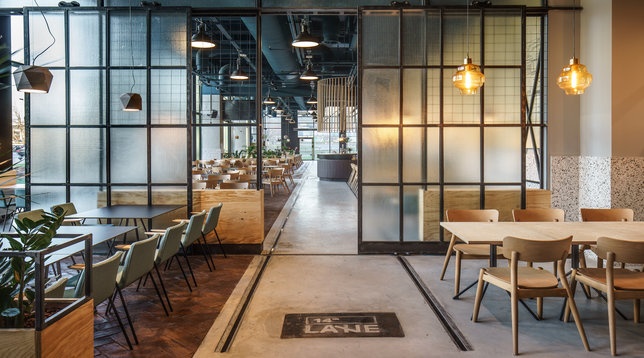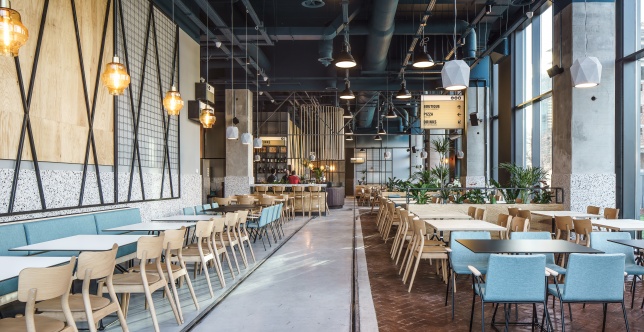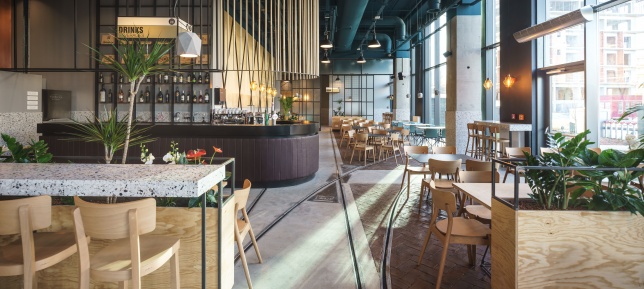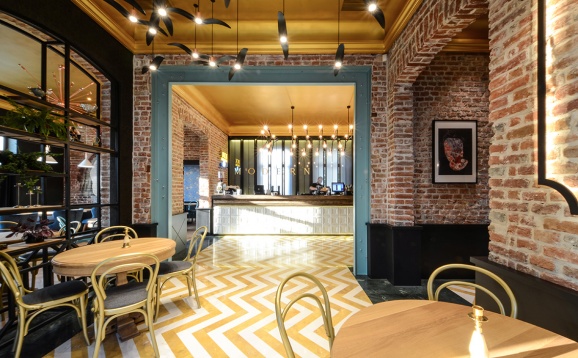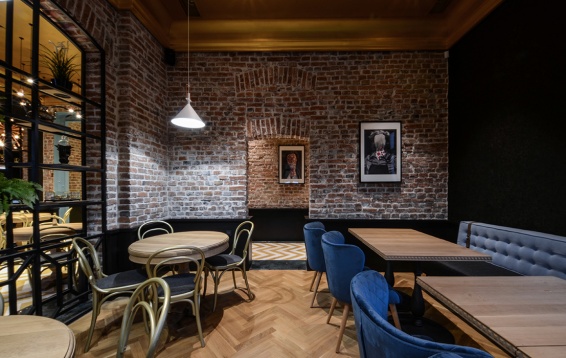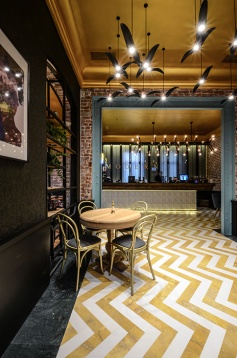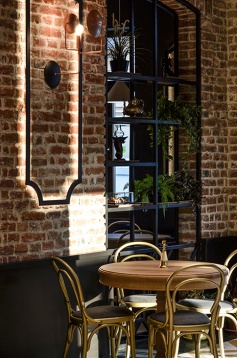HISTORY
Architecture&Design studio established in Bucharest in 2008 by Vladimir Mîndru, to whom Irina Lupu and Rareș Fotău joined in the following years. They are all architects who graduated at UAUIM and share the same openness and curiosity for contemporary design.
SPECIFIC
In their projects there is a perpetual search for the balance between utility and aesthetics and a firm concern for adaptation, experiment, sustainability and evolution.
ROMANIAN DESIGN WEEK APPEARANCES
2019 // Mamizza
The story of the design and nature of the space revolves around the conceptual character that generated the project: Mamizza. She is no longer a person we would anticipate, she is a modern figure, with contemporary twists, but who still makes the same notorious neapolitan pizza. It is this joining of traditional and modern that makes a key element of the design. Pieces made of aged wood prevale, that together with ceramics and metal generate elements with well defined lines. The colour scheme is similar to those of traditional neapolitan restaurants.
Coming to spatial perception, two distinct main areas are established through the use of different formal approaches: the bar – that is actively engaged in customers’ use, and the pizza bar – designed as a dynamic diorama, that features and highlights both the pizza oven, as a sculptural object and the whole preparation process, with every of its stages.
2018 // 14th Lane
The first electric tram in Bucharest was no. 14, that went to „Uzina Electrică”. 125 years after, across the former power plant, a new building is rising and the restaurant at the ground floor receives the name of the first tram lane. The project was approached as a food-court. Being large enough, several corners with specialized kitchens were created, offering a wider range of experiences based on the combination of design and cooking.
It’s working as an alveolar mechanism; the zones are opened depending on the hours. From the story of the "tram 14" not only the name was kept. Among design elements, a tram rail was inserted into the industrial floor and technical drawings of a locomotive are engraved in the plywood walls.
Materials, textures, lights have been chosen to provide contrasting visual and tactile experiences. Behind the industrial metal doors are exposed warm-light lamps, terrazzo tops are placed over wooden planks, under the metal counter, the bar is clad in the leather.
2018 // Excelsior
A vertical section through the restaurant space will reveal three registers and a gradient from compact to diaphanous. The middle layer, the walls without plaster is the binder between the marble or wood flooring and ceiling and the preserver of the house’s history. The eclectic atmosphere derives precisely from this arrangement of the two mirrored registers, as they try to grow towards each other, and whose contrast is melted in a neutral median layer.
The whole space was designed as a suite of frames. The interior carpentry was removed and the passages between rooms were marked with pastel metal frames. Pieces of furniture reinterpret old elements that would have been found in such a house long ago - a stove shaped only from the edges and metal frames suggesting the lines of classic doors. The floor is framed with paneling, the ceiling has a frame made of a perimeter profile in each room. Every element is outlined but also communicates subtly, finding correspondents in others.
Architecture&Design studio established in Bucharest in 2008 by Vladimir Mîndru, to whom Irina Lupu and Rareș Fotău joined in the following years. They are all architects who graduated at UAUIM and share the same openness and curiosity for contemporary design.
SPECIFIC
In their projects there is a perpetual search for the balance between utility and aesthetics and a firm concern for adaptation, experiment, sustainability and evolution.
ROMANIAN DESIGN WEEK APPEARANCES
2019 // Mamizza
The story of the design and nature of the space revolves around the conceptual character that generated the project: Mamizza. She is no longer a person we would anticipate, she is a modern figure, with contemporary twists, but who still makes the same notorious neapolitan pizza. It is this joining of traditional and modern that makes a key element of the design. Pieces made of aged wood prevale, that together with ceramics and metal generate elements with well defined lines. The colour scheme is similar to those of traditional neapolitan restaurants.
Coming to spatial perception, two distinct main areas are established through the use of different formal approaches: the bar – that is actively engaged in customers’ use, and the pizza bar – designed as a dynamic diorama, that features and highlights both the pizza oven, as a sculptural object and the whole preparation process, with every of its stages.
2018 // 14th Lane
The first electric tram in Bucharest was no. 14, that went to „Uzina Electrică”. 125 years after, across the former power plant, a new building is rising and the restaurant at the ground floor receives the name of the first tram lane. The project was approached as a food-court. Being large enough, several corners with specialized kitchens were created, offering a wider range of experiences based on the combination of design and cooking.
It’s working as an alveolar mechanism; the zones are opened depending on the hours. From the story of the "tram 14" not only the name was kept. Among design elements, a tram rail was inserted into the industrial floor and technical drawings of a locomotive are engraved in the plywood walls.
Materials, textures, lights have been chosen to provide contrasting visual and tactile experiences. Behind the industrial metal doors are exposed warm-light lamps, terrazzo tops are placed over wooden planks, under the metal counter, the bar is clad in the leather.
2018 // Excelsior
A vertical section through the restaurant space will reveal three registers and a gradient from compact to diaphanous. The middle layer, the walls without plaster is the binder between the marble or wood flooring and ceiling and the preserver of the house’s history. The eclectic atmosphere derives precisely from this arrangement of the two mirrored registers, as they try to grow towards each other, and whose contrast is melted in a neutral median layer.
The whole space was designed as a suite of frames. The interior carpentry was removed and the passages between rooms were marked with pastel metal frames. Pieces of furniture reinterpret old elements that would have been found in such a house long ago - a stove shaped only from the edges and metal frames suggesting the lines of classic doors. The floor is framed with paneling, the ceiling has a frame made of a perimeter profile in each room. Every element is outlined but also communicates subtly, finding correspondents in others.
















